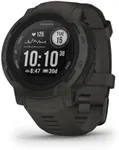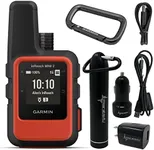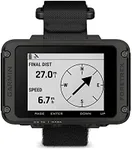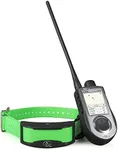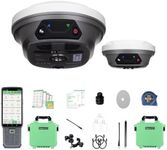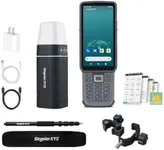Buying Guide for the Best Hiking Gps
Choosing the right hiking GPS can significantly enhance your outdoor adventures by providing accurate navigation, tracking, and safety features. When selecting a hiking GPS, it's important to consider various specifications that will best suit your needs and preferences. Here are some key specs to look out for and how to approach them.Battery LifeBattery life refers to how long the GPS device can operate before needing a recharge or new batteries. This is crucial for long hikes or multi-day trips where access to power sources may be limited. Battery life can range from a few hours to several days. If you plan on short day hikes, a GPS with shorter battery life may suffice. For extended trips, look for models with longer battery life or options for using replaceable batteries.
Display Type and SizeThe display type and size determine how easily you can read the GPS information. Larger screens are easier to read, especially in bright sunlight, but they can make the device bulkier. Smaller screens are more compact and lightweight but may be harder to read. If you have vision difficulties or prefer quick glances at your GPS, opt for a larger, high-resolution display. For those who prioritize portability, a smaller screen might be more suitable.
Mapping and Navigation FeaturesMapping and navigation features include preloaded maps, the ability to download additional maps, and navigation aids like waypoints and route planning. These features are essential for accurately tracking your location and planning your route. Basic models may offer simple breadcrumb trails, while advanced models provide detailed topographic maps and turn-by-turn navigation. Choose a GPS with mapping features that match the complexity of your hikes; simple trails may only need basic navigation, while remote or complex routes benefit from detailed mapping.
Durability and Water ResistanceDurability and water resistance ensure that your GPS can withstand harsh outdoor conditions. Hiking often involves exposure to rain, dust, and rough handling. Look for devices with rugged construction and high water resistance ratings (e.g., IPX7 or higher). If you frequently hike in wet or challenging environments, prioritize models with superior durability and water resistance to ensure reliable performance.
Satellite Reception and AccuracySatellite reception and accuracy determine how well the GPS can pinpoint your location. Good reception is vital in dense forests, deep valleys, or areas with limited sky visibility. GPS devices use different satellite systems like GPS, GLONASS, and Galileo. Models with multi-system support generally offer better accuracy and reliability. If you hike in challenging terrains, opt for a GPS with robust satellite reception and high accuracy to ensure you stay on track.
User Interface and Ease of UseThe user interface and ease of use refer to how intuitive and straightforward the GPS device is to operate. A complex interface can be frustrating and time-consuming, especially in critical moments. Look for models with simple menus, clear instructions, and easy-to-use buttons or touchscreens. If you're not tech-savvy or prefer quick and hassle-free navigation, choose a GPS with a user-friendly interface.
Additional FeaturesAdditional features can include things like altimeters, barometers, compasses, and connectivity options (Bluetooth, Wi-Fi). These features can enhance your hiking experience by providing extra data and connectivity. For example, an altimeter can help you track elevation changes, while Bluetooth connectivity allows for syncing with other devices. Consider which additional features are important for your hiking needs and choose a GPS that offers those functionalities.
